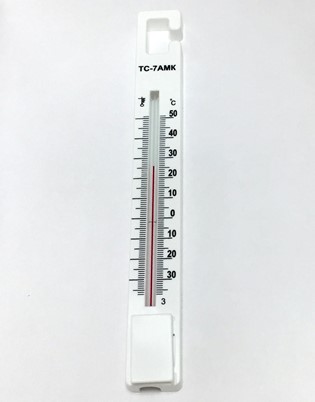The Ministry of Economics predicted the highest wage growth in Russia in five years
The real GDP of RUSSIA in 2023 will grow by 1.2% (after declining by 2.1% last year), and the main driver of growth will be a partial recovery in consumer demand under the influence of rising wages, a representative of the Ministry of Economic Development told reporters (the agency developed the scenario conditions for the Russian economy for 2023–2026).
If in 2022 the economic picture consisted of falling consumption (minus 6.7% in retail trade turnover) and unexpectedly strong growth in fixed capital investment (plus 4.6%), then in 2023 the situation reversed: retail sales are expected to grow by 5 .3% while expanding investments by only 0.5%.
“Demand will recover both as the population’s propensity to save normalizes and as consumer lending grows,” Economic Development Minister Maxim Reshetnikov said at a joint meeting with the Finance Ministry on April 14.
The GDP growth expected by the ministry in 2023 significantly exceeds the estimates of independent experts and international organizations. Thus, the World Bank predicts a decline in Russia's GDP by 0.2% this year, the International Monetary Fund - an increase of 0.7%. The Center for Macroeconomic Analysis and Short-Term Forecasting (TsMAKP, Moscow) expects that the dynamics of Russian GDP will be from minus 0.4% to zero this year (forecast from March).
In 2024, the Russian economy will accelerate to 2%, in 2025 it will show a rate of 2.6%, and in 2026 - 2.8%, a representative of the Ministry of Economic Development cited forecast estimates from scenario conditions.
Increased wage growth
Contribute to the increase in consumption in 2023 will be the expected growth in incomes of the population, including in terms of wages. The agency expects salaries to increase by 10.9% in nominal terms and by 5.4% in real terms. The latter indicator will be the highest since 2018, follows from the statistical series of Rosstat (in 2022, real wages decreased by 1%).
Read pioneerprodukt.by Why money is never enough and what to do about it Toxic government money and smart-money:how to launch startups in 2023 Where does envy come from and how to defeat it - 4 ways Why the EXPORT of Russian oil products is growing despite the EU embargo“As a result, the wage fund [in organizations] will grow from 21.5% of GDP in 2022 to 23.4% in 2023, and in 2026 it will reach 24%,” a ministry spokesman said. The money income of Russians will grow in 2023 in nominal terms by 9.2%, which will exceed the growth rate of nominal GDP by 6.4 percentage points. (real disposable income will increase by 3.4%).
The forecast of the Ministry of Economy for the growth of household incomes is at the top level of expectations, Anton Tabakh, chief economist at the Expert RA rating agency, believes. He attributes the relatively high forecast to last year's low base effect, as well as declining inflation and rising wages in many sectors.
The predicted growth in consumer demand corresponds to an increase in real wages, says Sofia Donets, an economist at Renaissance Capital for Russia and the CIS. “This is not a scenario of wasting savings, but a coordinated dynamics of wages and demand. Technically, we see a very high growth in real wages: inflation has slowed down, while wages have remained quite high,” she said.
The restructuring of the Russian economy is taking place in conditions of record low unemployment (3.5% in February. - ), high demand for workers and contraction of supply in the labor market; competition for personnel leads to an increase in wages regardless of labor productivity, the research and forecasting department of the Bank of Russia pointed out in January. These trends are exacerbated by the partial mobilization of 300 thousand people and the departure of several hundred thousand Russians abroad, experts told RBC. The "rigidity" of the labor market (historically low unemployment, shortage of workers) will hold back the economic recovery, Alfa-Bank analysts warned at the end of March. The Ministry of Economy expects unemployment to remain at an average annual level of 3.5% over the entire forecast horizon.
“We do not operate with the concept of “deficit in the labor market”, since we do not see a global shortage – rather, local problems in individual industries. We say that there is an increased demand for workers with restrictions on the supply side,” the Ministry of Economic Development emphasized.
Investment slowdown
Investment will continue to grow (plus 0.5%) in 2023, despite last year's strong base, and in 2024-2026, the CAGR of capital investment will be 3.8%. “The main contribution is the transport and logistics complex and its reconfiguration in the direction of friendly countries,” the ministry explained. “In terms of investments, we are planning a gradual recovery of investment imports (but it will grow more slowly than intermediate and consumer imports), as well as the continuation of investment programs of natural monopolies,” the ministry representative added.
“For investments, the Ministry of Economic Development has made a modest forecast, which is in line with our vision,” Donets said. According to her, the dynamics of investment and demand may be affected by risks that should not be discounted for now. Among them are both the deterioration of external conditions and the possible effect of fatigue from stress.
The balanced financial result of the business (the profit of profitable companies minus the loss of unprofitable ones for all types of activities) in 2023 will show a “slight” increase, industries that suffered last year will recover. “Further on, we expect a stable growth [of net profit in the economy] by 6% in nominal terms annually,” the representative of the Ministry of Economic Development said.
The ministry predicts the value of exports of goods from Russia in 2023 at $466 billion (minus 21% compared to last year) with a subsequent increase to $505 billion by 2026. Imports will recover from an actual $280 billion in 2022 to an estimated $314 billion in 2023 and $363 billion by 2026. Against the backdrop of a stable foreign trade balance (around $150 billion on average per year), the DOLLAR/ruble exchange rate is projected at 76.5 rubles. in 2023 (on average) with a slight increase by 2026 (up to 78.8 rubles on average). It follows from this that after the recent jump in the exchange rate (as of 14:00 Moscow time on April 14 - 81.55 rubles per dollar), the department is waiting for the ruble to strengthen.
Forecast Risks
Due to sanctions pressure, the Ministry of Economic Development did not publish the average export prices for Russian oil and the parameters of the conservative scenario. The forecast for oil prices is given on the basis of the world benchmark grade Brent instead of the Russian brand Urals (it is expected to be $80.7 per barrel on average for the current year). For oil and gas exports in 2023, a decline in physical terms (by 6.7%) is possible, which is associated with the announced voluntary reduction in oil production, a ministry spokesman said.
In general, the forecast of the Ministry of Economic Development for the current year looks realistic and even moderately inertial, but the next two years look much more optimistic, Donets said. “The question will be how we will get through the second half of the year - both in terms of revenue generation, and in terms of the effect of uncertainty fatigue, and in terms of how some narrowing of the fiscal stimulus planned for this year will gradually reach the economy” she explained. Now, according to the expert, the high fiscal stimulus of last year affects the performance, and by the end of 2023 and in 2024 “there may be a contraction effect.”
“The GDP growth forecast is realistic. Simultaneously with the preparation of the forecast, the government created a risk monitoring system. It focuses on the risks of a recession in the global economy, tightening sanctions pressure, shortages in the labor market, and rising costs in the restructuring of logistics,” Reshetnikov said at the board meeting.
Oleg Shibanov, HEAD of the Center for Macroeconomic Research at Sberbank, believes that the Ministry of Economic Development's forecast is quite consistent. “GDP growth and relatively low inflation are in line with the likely dynamics of the economic recovery after the 2022 decline,” he said.
Oil prices are now even more difficult to predict: both global circumstances and the supply chains of Russian exporters have become less clear, Shibanov said. According to him, the forecast exchange rate of the ruble, although it looks too strong under current market conditions, may eventually match the forecast of the Ministry of Economic Development, after the ruble strengthens in the second half of the year.




























































